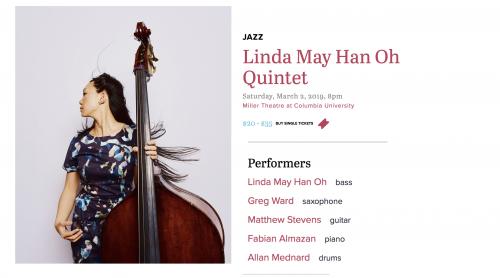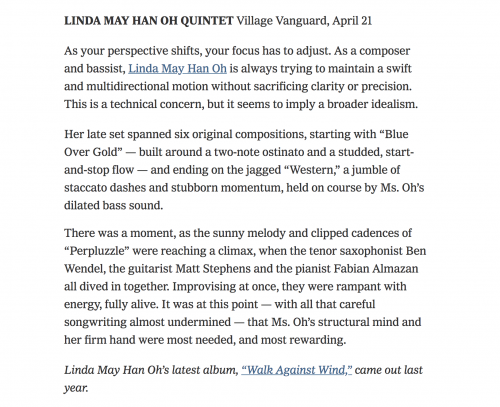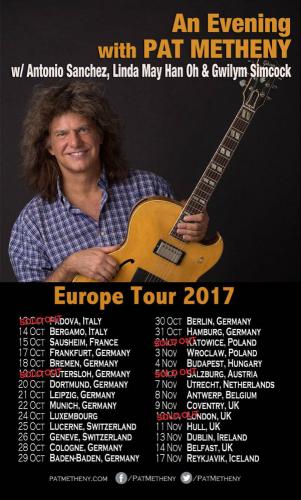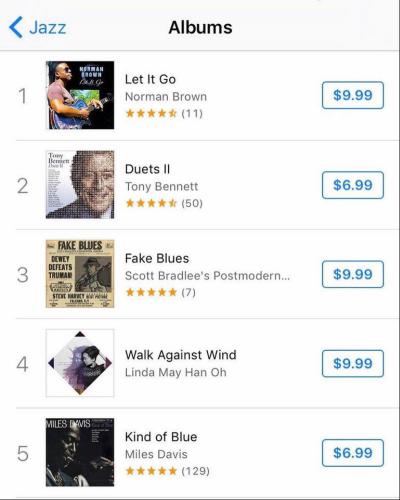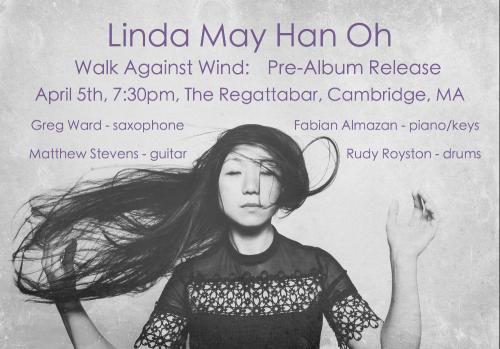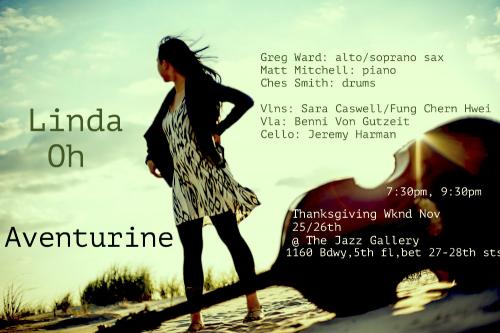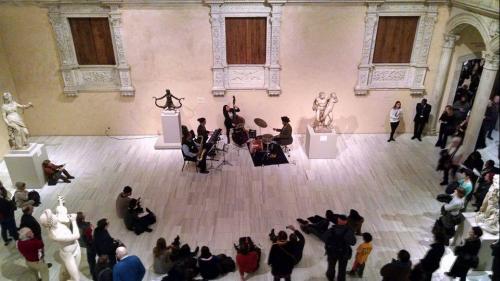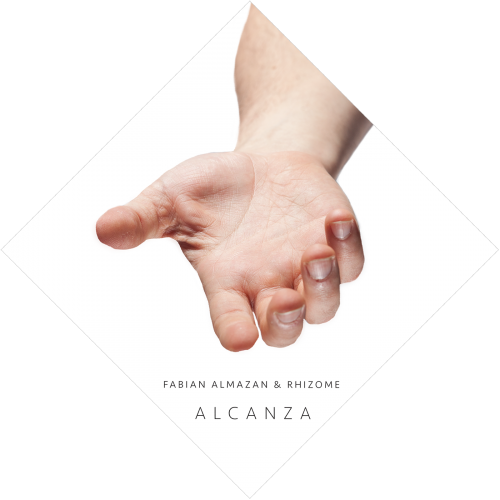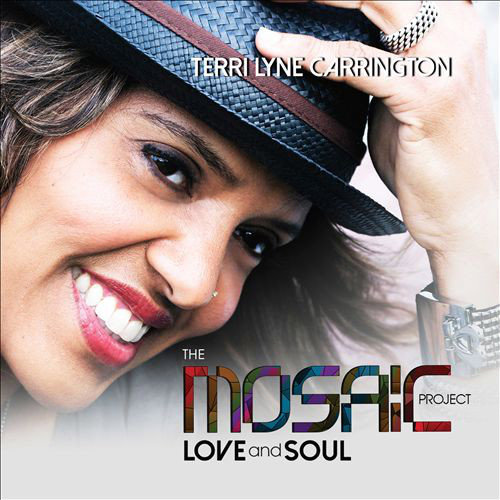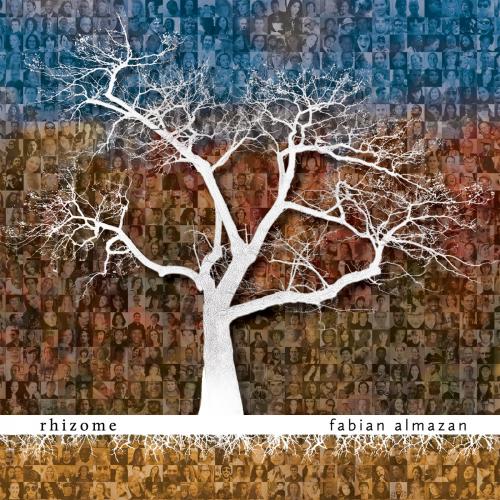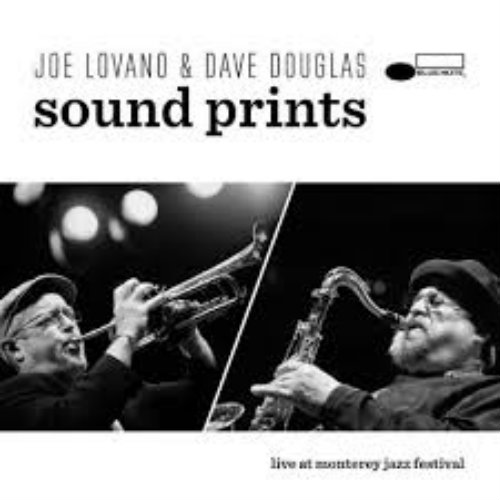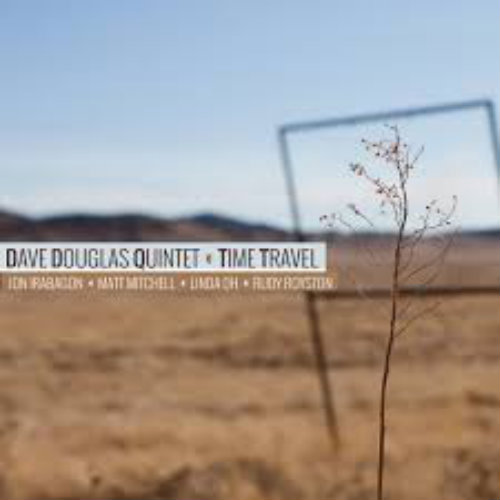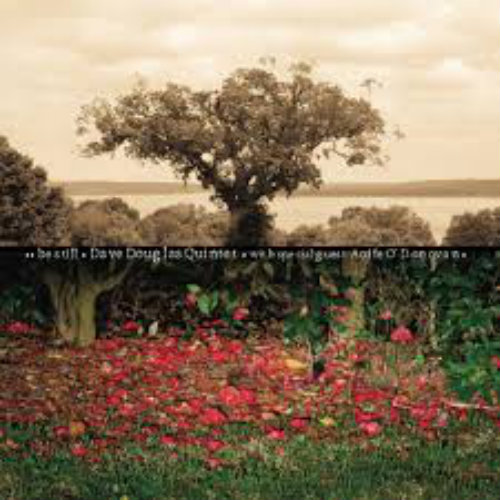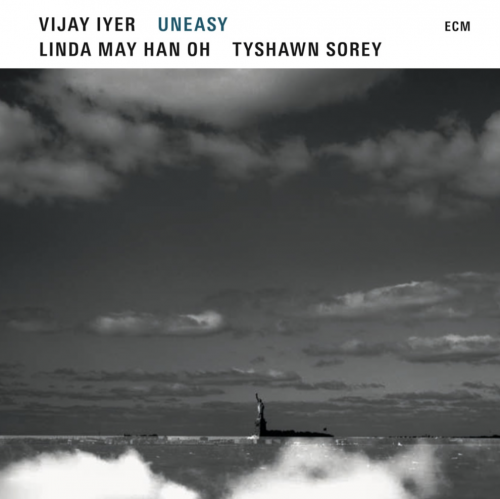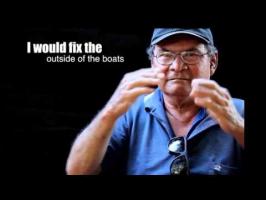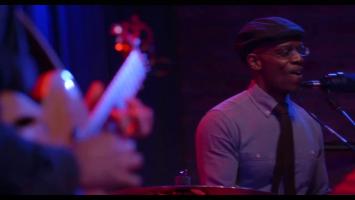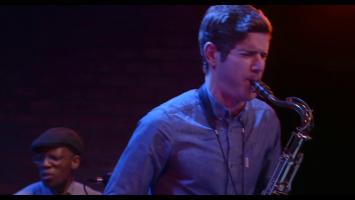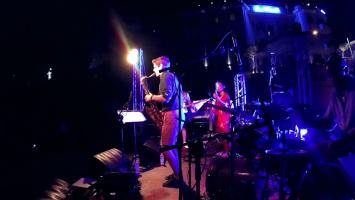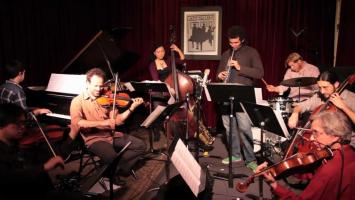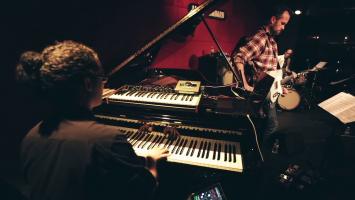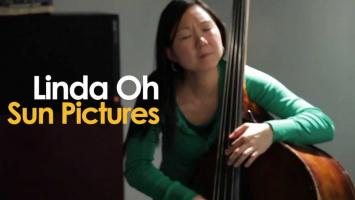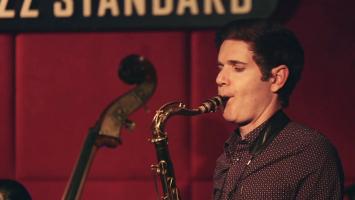Pat Metheny’s band mates rise to the occasion at Strathmore
"Oh and Sánchez, in particular, made the music rich and lustrous. Diminutive in stature, the bassist had a full, round, clean sound that was distinct even through the intensity of the guitar and drums. Oh was also easily able to follow Metheny’s labyrinthine harmonies, on top of him at every turn in the hard-swinging second tune and the Spanish flair of the fifth."
"Oh and Sánchez also took duo features with Metheny. The bassist joined him in a downright sexy take on the standard “How Insensitive,” her tango-touched rhythm entwining with his sinuous single-note lines (which turned into suggestively dissonant chords when he accompanied her solo)."
Michael J. WestThe Washington Post
read morePat Metheny and friends crush The Egg
"Oh controls the bass in such a way that I can only describe as both forceful and graceful – a contradiction of elegance and pure physical power."
DAVE DECRESCENTE AND ERIN CLARYnysmusic.com
read moreLinda Oh: Sun Pictures
The title of bassist-composer Linda Oh’s third CD refers to the oldest remaining outdoor movie theater, located in her former home country of Australia. But Sun Pictures is also an apt description of her seven original songs, which are gently upbeat and airy, often composed as sonic snapshots inspired by artwork or settings from her travels. Thus “Footfall” depicts walking through autumnal snow in Eastern Europe, “Blue Over Gold” plays off a Rothko painting and “Terminal 3” was germinated by a late-night layover at JFK International.
What the scenes have in common is a clean matte, and the straight-to-two-track music from a consistent quartet with no guest stars is likewise well delineated and unhurried. Fellow Aussie James Muller captures this delicate spirit, one that is simultaneously wistful and perceptive, with his guitar phrases, frequently in tandem with saxophonist Ben Wendel. At a time when Oh is in vogue due to her high-profile membership in bands led by Dave Douglas and/or Joe Lovano, her decision to release this understated charmer is a sign of confidence and commitment to her own muse.
Britt RobsonJazztimes
read moreLinda Oh rocks FlynnSpace | Brent's Notebook
Today was one of those days when I felt like I was missing too much of the Burlington Discover Jazz Festival. I spent the afternoon and early evening in our new Free Press offices overlooking Lake Champlain and the Adirondack Mountains. There’s usually no reason to complain about that view, but I was busy writing jazz-festival previews on a gorgeous, summer-like day when I really wanted to be out on Church Street hearing live music. Not that I’m whining – I get to cover music and other artistic stuff for a living, and there’s nothing else I’d rather do, so I guess I can handle the occasional disappointment of not hearing as much music as I’d like.
At least I got to hear Linda Oh tonight. She’s a young bass player who with her group, Sun Pictures Quartet, had the night’s sole headlining show, at FlynnSpace. I caught the beginning of her “Meet the Artist” session at FlynnSpace this afternoon in which the Malaysian-born, Australian-raised musician talked about one of her early bands that played covers of songs by the Red Hot Chili Peppers, Rage Against the Machine and Metallica. That little nugget had me listening at her show tonight for signs that her rock background might influence her jazz playing.
I can boldly say that, as far as my ears are concerned, it does influence her playing, and it doesn’t. How’s that for clarity and critical perception?
The set-up of her quartet, built around guitar, bass and drums (with sax added for jazzy effect), lends itself to rock ‘n’ roll drive, which Oh and Sun Pictures Quartet demonstrated with frequency. The music propels forward ceaselessly and the tunes are quick by jazz standards. The Oh- penned ”Yoda,” for instance, was about as short as the Jedi master himself, clocking in around five minutes. (Oh noted that the song is dedicated to her sister, who she said is “wiser than I am.”)
The bass line for the song “Footfall” reminded me of something Krist Novoselic of Nirvana might have done. There weren’t a lot of slow, tender ballads from this group; for the most part, the music was so fast the Road Runner could have used it as a soundtrack while eluding Wile E. Coyote.
Those are some of the similarities Oh’s music had to rock, but overall her set was jazz through and through. There was no slap-bass playing a la Flea of the Chili Peppers. Oh demonstrates extremely well-developed compositional skills. Her connections with her fellow musicians in the Sun Pictures Quartet show a jazz musician’s head for interaction. She began the night by establishing a melody on her upright bass and letting sax player Ben Wendel chime in for a supporting role, rather than the typical bass-supports-sax template. And while her propensity toward rock energy drove the 100-minute set, Oh still left plenty of room for Wendel, guitarist Matt Stevens and drummer Rudy Royston to improvise like the jazz musicians they are, which they did exceedingly well.
The night ended on two of Oh’s more reflective tunes, “Deep Sea
Dances” and the encore “Lullaby 18-Plus.” They may have been pensive compared to the rest of the night’s tunes but still packed power, just like the rest of Oh’s compelling performance.
Brent HallenbeckBurlington Free Press
read moreLinda Oh: Snapshots of a Jazz Bassist’s
Rise
During a recent 80th birthday celebration for Wayne Shorter at Manhattan’s Town Hall, the eminent saxophonist and composer held court with his quartet, whose singular chemistry relies in no small measure on the presence of bassist John Patitucci. Before Shorter’s band went on, bassist Esperanza Spalding, a current and deserving darling of the jazz world, shone while playing demanding arrangements of Shorter tunes in a trio with pianist Geri Allen and drummer Terri Lyne Carrington. In an opening set, yet another bassist, Linda Oh, commanded attention within Sound Prints, a quintet formed by saxophonist Joe Lovano and trumpeter Dave Douglas to play tricky originals inspired by Shorter’s music. Oh’s solos — concise, tuneful, never rote — elicited impassioned applause. More subtly impressive was the rhythm-section cohesion she helped build with pianist Lawrence Fields and drummer Joey Baron, while playing music that often shifted swiftly from boppish swing to trickier rhythms, from tightly arranged passages to freer collective improvisation.
At 29, Oh should be on everyone’s list of up-and-comers in New York. Her blend of skill and sensitivity is one pleasure of Douglas’s current quintet; the trumpeter’s enthusiasm led him to sign her to his Greenleaf label. I was struck just as much by Oh’s elegant handling of music that embraced jazz, Latin, and Afro-Cuban traditions on pianist Fabian Almazan’s CD, “Personalities.”
Oh straddles several worlds quite naturally. Born in Malaysia to Chinese parents and raised in Perth, Australia, she trained first on bassoon, and spent much of her teen years “playing Red Hot Chili Peppers covers in Aussie rock bands,” she said. (Her polished and rhythmically astute debut CD as a leader, 2008’s “Entry,” ends with a smart transformation of that band’s “Soul to Squeeze.”) Her next recording, 2011’s “Initial Here,” was wider ranging. On it, she played both acoustic and electric bass, and even a little bassoon. Almazan figures into that one, as does singer Jen Shyu. Like Shyu, who is of East Timorese and Taiwanese descent, Oh has a fascination with Korean folk music; she plans to travel to South Korea later this year to work with traditional musicians.
When she celebrates the release of “Sun Pictures” (http://www.greenleafmusic.com/linda-ohs-sun-pictures-now-available-for-preorder/) (Greenleaf Music) on August 27 at Manhattan’s Jazz Standard, Oh will trace a reasonably expansive landscape. In her liner notes, she describes her new tunes as “snapshots of my recent travels and of my experiences playing music” — gigging in various cities and countries, and traveling back to Australia to visit family and friends during times off. Here she leads a quartet including saxophonist Ben Wendel, and drummer Ted Poor and guitarist James Muller (the latter, an old friend from Australia). The album is named for what she claims to be “the oldest outdoor movie theater still in operation,” in Broome, a tourist destination in Northwest Australia with a history rooted in pearl diving (Oh’s sister lives there).
“Sun Pictures” came together as does much of the career of a busy young jazz musician in New York City — through interconnecting relationships, sheer determination, and chance. Via email, she and I spoke about this new music, and the arc of her recent career.
It seems like this CD happened as do so many new jazz recordings, through artist initiative, and not recordlabel planning, right?
It was a free recording session, and though the studio conditions weren’t ideal it was refreshing to be recording live-to-two-track as opposed to the usual multi-tracked studio session. I’ve never had a label “set-up” a recording of my own — in the past, it has just been a self-funded session at a recording studio.
When I was presented with the opportunity to record at WKCR [Columbia University’s radio station], I was also offered a gig at the Brooklyn Museum. I decided to get a band together and try some new music. It happened that James Muller was in town and I wanted to play with him. I also wanted to write some music that featured guitar. Ben Wendel and I had played sessions together and we had tried to make some gigs happen, but because of our schedules it never worked out. I was lucky he happened to be in town at that time. Earlier on in the year, Ted Poor had done an amazing job playing on my live string recording at the Jazz Gallery [for expected forthcoming release] and he was available at the time. I had always loved Ted’s playing and we had done some playing with [pianist] George Colligan a while back. He and Ben also had a history playing together since their Eastman [School of Music] days.
At times it seems like you are really trying to create a dialogue between guitar and sax...
Yes, that was the plan — less of just separate solo sections for individual instruments, more of active trading between sax and guitar.
What inspired that opening track, “Shutterspeed Dreams,” which I know you made from edits? Did you also do some processing to the sound?
Yes, I had used effects like detuning and some filters on the raw sound, but no virtual instruments. The piece is about dreaming — as if the dream is a series of snapshots, where sometimes the light is so bright that it’s blinding and you can’t open your eyes within the dream.
Clearly, visual images are significant for your music, including the work of painters. Did any piece in particular inspire the song “Blue Over Gold,” which your liner notes describe as inspired by (/artists/markrothko143)Mark Rothko (/artists/markrothko143)?
There was one Untitled painting — the colors are blue over gold (some might say a bit more orange than gold). The blue segment has a black border outlining it. Was I “trying to ask the investment in a single form” — no. The colors in the opening to me represent an array of golds, greens, and blues. I've always associated pitches with color. The opening notes G and E — for me, G is gold/yellow, while E is green. The harmony F#-D-F# is dark blue (a little more purple than F though), and D is light brown color.
There have been very strong connections throughout history between visual art and music. It is not something I think constantly about, though I would like to experiment with those ideas. I draw more connections specifically with music and colors, though I wouldn’t say I am a synesthete.
One new tune, “Polyphonic HMI,” is named for a music analysis company that pioneered “Hit Song Science” software. Considering also companies like Spotify and Rhapsody, do you think we are beginning to lose something important about the experience of music as a listener? Does your tune in any way reference that algorithm?
The structure does not relate to any algorithm used by Polyphonic HMI. I just wanted to write a strong tune with a sense of drama. The two sections were composed independently, and I felt they worked well together as an interesting narrative, starting with a dramatic, almost a “warning signal,” of a melody, shifting to the more mellow B section that accelerates and falls apart.
There are other companies like Polyphonic HMI, and I wouldn’t be surprised if some of them are already working with Spotify and Rhapsody. With this technology I don’t think it’s the “experience” that will be lost as a listener — it’s more other issues that concern me. The point of the algorithms is to predict what may be a commercial success, or create music for the purpose of commercial success. This testing system may determine what we get bombarded by on radios and on the Internet. If something tests as a hit song, most likely there will be people within the music business who would be willing to invest in the song financially.
If this is the way of the future, then there will be a lot of beautiful and interesting music that will not reach bigger audiences (even more so than now) and I feel there will be less risks taken within the music business to support a new unique voice. Even now, there are people in the music business who rely on how many “Facebook likes” a musician has before they would even give the music a listen. We have the choice as individual, conscious beings to expose ourselves to as much music as we like and decide for ourselves what moves us and what we perceive as good music. We don’t have to be just another anonymous number that makes up the general public.
Your albums to date each bear different instrumentation and a different sound. What, for you, are the unifying elements or approaches between these projects?
For each group on each album I had different approaches to the compositions. I like to think that when I compose I need some sense of drama or narrative within the composition. With most of these compositions I try to have a clear intent, though still just a framework to allow the musicians to create something different within the moment. Some of the tunes have underlying rhythmic structures that are the basis of the tune, some more dramatic than others, and some of them have a sense of humor or quirkiness, which I like to have sometimes. There is often an element in some of the tunes that for me is quite deeply personal, things I can more easily share through music than through words.
How does the challenge of working in Sound Prints compare to other bands you’ve worked in? How did its inspiration — Wayne Shorter’s music — enter your life?
Sound Prints was the first time that I worked within a band where most of the group were musicians from another generation. It’s different from working with your peers and initially, it’s easy to feel that you need to play in a certain way — i.e. how you think they want you to sound — rather than just being yourself and letting the music happen.
I first got into Wayne Shorter actually through Weather Report, when I was really into Jaco Pastorius, and then I worked back from there to the Miles Davis quintet, then to his own albums like “Adam’s Apple” and “Schizophrenia.” I loved and still continue to love his compositions and his seemingly uninhibited concept of improvisation.
How did the relationship with Dave Douglas begin? What have you learned from him, both about making music on the bandstand and related things off of it?
I met Dave at the Banff Centre in 2007 when he was running the Jazz and Creative Improvisation Workshop. In 2009, I was a part of the Carnegie Hall Weill professional development workshop that he was running that year. Since then, he asked me to play on a few dates and to tour with his Tea for Three band. Around that time, I had recorded my second record and asked Dave if he’d be into releasing it, which he was. Dave is an inspiring person. Many people who know and work with him can easily testify that he is probably one of the most active and hard- working people around. If he’s not writing new music, he’s probably running a marathon, organizing a workshop, or curating a festival, all on top of running a record label and leading his own bands.
On the bandstand, Dave has pretty specific concepts with each tune and is very particular about tempos, which is understandable because tempos really are an integral part of how a tune feels; that’s something I’ve been more of aware of when playing with other bands. I learned a lot from him and also the Greenleaf team, mainly that it’s not enough recording and releasing an album and trying to get good press. A lot of it is good time management, good communication, and being constantly active. His tenacious and pro-active attitude is always an inspiration.
Of course, there are others who have influenced me. Joe Lovano is one of the loveliest people around and his calm, warm personality is contagious and none of the minor things that bother many people never seem to phase him. Joey Baron is one of the funniest people, and besides being a great musician he’s a great magician. I think Joey’s one of those people who will never seem to age because of his vivacious and positive personality. Other people who have influenced me a lot are Kenny Barron (who is also to me one of those ageless people) and bassist Greg Cohen, who always helps me step back and see the bigger picture.
What other bands or connections have most marked your development since coming to New York?
I look back on some of the relationships I’ve developed with my peers and I’m very thankful to work with so many talented musicians who are also good friends, and who have really pushed me to grow. One of my favorite groups to play in is with Fabian Almazan — both his trio and his group with strings. We went to Manhattan School of Music together. The beauty of his compositions and his playing have really been important to me. Also, as a bass player I feel like the drummers I’ve had the opportunity to play with regularly here and develop a relationship with here have really influenced me (Rudy Royston, E.J. Strickland, Ted Poor, Justin Brown, Johnathan Blake, Henry Cole, just to name a few).
You were born in Malaysia and raised in Perth, Australia. Do you have relatives in both places, and have you spent much time in Malaysia, too?
My parents are Malaysian-born Chinese: my mother’s side is mainly in Malaysia, my dad’s is mainly in Australia. I’ve only been back twice since I left when I was 3, but hope to go back sooner than later.
Is there a jazz scene or community in Australia that you and James Muller benefited from?
James is from Adelaide, but was based in Sydney for quite a few years. I’m from Perth, so we met at the James Morrison Scholarship Competition when I was 17 and he was in the backup band (a competition started by its namesake, multi instrumentalist James Morrison). I think each city has a specific scene. I was lucky in Perth to have quite a few musicians who inspired me, people who were extremely proficient on their instruments, and some who really pushed me.
Your mention of working with traditional musicians in South Korea made me think of Jen Shyu, who is on your previous CD. Did she influence that interest? Why South Korea? What sparked that interest and what do you hope to learn?
I’m going specifically to play at the Gwang Ju Festival with Young-Chi Min (who plays jang-gu, a traditional drum), Young-Na Kim (who plays Haegeum, a three-stringed fiddle), pianist Hakuei Kim, and Simon Barker, a drummer from Sydney. For those who haven’t seen the documentary “Intangible Asset No. 82,” (http://intangibleasset82.com/about) I highly recommend it. [Note: In that wonderful film, Simon Barker searches for an enigmatic Korean shaman, Kim Seok-Chul, a man he believes to be one of the world’s great improvisers.]
The story is beautifully documented and filmed by Emma Franz, who is a fellow Perth musician I met on a gig years ago. It is a great example of dedication and crossing cultural boundaries into new and exciting frontiers. Simon is an amazing and unique musician, and the Korean musicians — Kim Seok-Chul, Bae Il-Dong, and Kim Dong-Won — are outstanding. The openness from these musicians to share and teach is beautiful.
I’m currently looking at some of the traditional Korean Rhythms, I think the music is amazing and looking at these rhythms will make this collaboration much more interesting. It was a coincidence that Jen is currently in Seoul, studying.
Why am I interested in Korean music as opposed to Chinese or Malaysian Traditions? Well, I’m Malaysian-Chinese musician who grew up in Australia, playing American jazz music. Jen is an American of East-Timorese and Taiwanese descent studying Korean music and just recently studied in Indonesia. I guess the answer is that it is that this music interests me, and already in my interactions with Simon, Dong-Won, and Bae, they’ve been so open and giving with their information. [Korean pansori singer Bae il Dong and percussionist Kim Dong Won, two of the main protagonists in “Intangible Asset #82”] Not that Chinese or Malay music doesn’t interest me — this is a just a choice right now. Also the concept of collaborating with musicians from another field for this concert in Gwangju is really exciting for me. More collaborations between jazz and other music interest me.
LARRY BLUMENFELDBLOUIN ARTINFO
read moreLinda Oh: Sun Pictures
Every time I chance upon bassist Linda Oh in performance—with the Joe Lovano And Dave Douglas Quintet or Marcus Strickland’s quartet—it’s impossible not to notice how she’s nudging things forward. That’s one of a bassist’s roles, of course, but you focus on Oh because of the grace she brings to that very physical job. Her lines float in the air. On her third album as a leader, this chiseled balance between thrust and lyricism becomes even more pronounced. You don’t realize how ardently several of these pieces are simmering until they’re actually boiling over.
Leading a quartet with sax and guitar up front, the New York bassist makes a case for measured movements being as combustible as more
aggressive gestures. Point your ear a certain way, and “Footfall” might sound like a Frisell ditty for a moment or two. But as the group breaks into a stride, the action sparks. Drummer Ted Poor sustains a fluid motion even though he’s using a series of chops and rattles to get the job done. Guitarist James Muller moves from cloudy chords to pointed licks to spilling lines with a percussionist’s determination. Tenor player Ben Wendel responds with a roaming adventure loaded with action. But subtlety reigns. By the time the piece concludes, you wonder how it got started in the first place.
The agitation of “Blue Over Gold” is a bit more evident. Using a minimal pattern that sounds like a Steve Reich fever dream, Oh has her charges milk the tension of repetition while looking for all sorts of avenues where release would be welcome. Perhaps the most attractive piece is opener “Shutterspeed Dreams,” which collapses a chunk of the music made for the session (recorded at Columbia University’s WKCR studios) and remixed into a compelling reverie. As it unfolds, you can’t tell up from down, even though its design logic is staring you dead in the eye. That’s Oh—nudging things forward again.
Jim MacnieDownbeat 2013
read more“Sun Pictures” by Takehiko Tokiwa, Jazz Life Magazine
Linda Oh, an established presence and constant sideman with the Dave Douglas Quintet, has just released her new album since her last CD "Initial Here" in 2012.
In "Sun Pictures" Oh unfurls a sonic portrait of her most recent journey through Australia – Oh's home country- and several cities she visited while on tour there. In this CD she initiates a complete redesign of her band introducing new members and unifying them around a sturdy concept.
Her new sidemen lineup, young NYC talents – Ben Wendel and Ted Poor – backed by James Muller, the popular Australian guitarist, are well equipped to tangle with Linda’s musical figures as they create a distinctive musical worldview.
This is evident in the superb "yoda", a song with a rich atmosphere infused with themes from Oh's family and hometown. This recording is a milestone for Linda Oh who has reached a new level and developed into a total musician.
(Translated from Japanese by Izumi Uchida)
Takehiko TokiwaJazz Life MagazineAlmost Famous, Almost Broke: How
Does a Jazz Musician Make It in New
York Now?
Linda Oh plays the bass. Acoustic and electric, in trios, quartets, quintets, and sextets led by some of the best musicians in contemporary jazz. She's 31, was born in Malaysia and raised in Australia, is of Chinese descent, and has lived in New York City, still the epicenter of jazz, for the past twelve years. In that time, through hard work, pluck (sorry), and great skill, her reputation has steadily grown, and she's quietly become a star in jazz circles. She has sat in on countless recording sessions, gigs all around town at venues small — where they pass around a tin can — and large, and increasingly tours the country and the world. Linda Oh is a sideman, or rather, a sidewoman. She is, you might say, almost famous.
Like many sidemen, Oh is also an aspiring bandleader. But if jazz is a notoriously tough sell, bass players are even tougher. Essential as the instrument is to time and rhythm, and as voluptuous its presence on the bandstand, it often fades into the background. Rarely do bassists' profiles scale to that of the larger-than-life Charles Mingus, perhaps the greatest composer in the jazz idiom besides Duke Ellington, or William Parker, out of the avant-garde school, or Ron Carter — or, these days, Esperanza Spalding, who can pack in an audience for a week-long engagement at a New York club. If mere mortal bass players want to lead, they get a night here, a night there.
In the three years, off and on, that I followed Oh around town — to watch her ply her craft and earn a living, and to observe who, if anyone, was bothering to listen — she's led groups at a storefront church on Bleecker Street; at SubCulture in Noho; and at 55 Bar in the West Village, where she will lead her band again on July 18. (She will also play with avant-funk master Craig Harris at the Rendall Presbyterian Church in Harlem on July 26.)
Along the way it became clear that jazz, thanks to Oh and the hundreds of young musicians like her around the city, is as vital as ever — artistically, anyway, if not economically. It may be, depending on your perspective and whom you ask, undergoing a renaissance in miniature.
"I think there are a lot of inventive things happening within the jazz scene," says Oh. "I think it's a beautiful thing so many musicians are branching out and crossing so-called genre boundaries in expressing their individual voices...but also honoring the tradition of the roots of the music."
Guitarist Matt Stevens, who often plays with Oh and is also on Spalding's latest album, echoes that feeling. "This current time period feels like I imagine it felt in the Sixties, early Seventies, when people were hungry to expand and be involved in different things," he says. "Nothing's off-limits artistically. You can draw from, and be influenced by, anything."
Musicians like Oh — musicians' musicians — don't care that their work isn't a mass phenomenon; they're the anti–Taylor Swifts, the un-Beliebers. In that way, they're countercultural, as were their forebears during Charlie Parker's and Dizzy Gillespie's bebop revolution uptown at Minton's in the Forties, or the Ornette Coleman–led free movement unleashed at the Five Spot in Cooper Square in 1959, or the post-Coltrane howls at Studio Rivbea during the loft era, in the decrepit streets of 1970s Soho. That heat and currency appears to be swirling around the jazz world once again.
"I feel that the resurgence is centered around the fact that it's like a hip underdog thing," Stevens says. "It does help when huge records like [Kendrick Lamar's] tip their hat in that direction, and these things start proliferating in the popular culture outside of just the jazz publications."
"In some ways, it's a perfect storm that has come at the right moment where enough people have gotten hip to it," says Brice Rosenbloom, senior music director at Le Poisson Rouge, formerly the Village Gate, and a founder and producer of the fourteen-year-old Winter Jazzfest, which has grown every year in terms of venues, artists, and audience. He attributes this storm to the attention around fusionist Kamasi Washington and the West Coast scene he's a part of, as well as to the recent biopics on Miles Davis and Chet Baker.
"It's crazy living in New York," says James Francies, a talented twenty-year-old Houston native studying at the New School. "Everyone is here. There will be nights where you can go see Pharoah Sanders in one club, then go see Chris Potter a few blocks away. Or you can see Harold Mabern at Smoke, then go see Brad Mehldau at the Vanguard. To me, that's insane."
Francies has already played with Questlove on and has done some arrangements for trendsetter Robert Glasper, one of his "Houston big brothers." In April 2015 he invited Oh, whom he met when he was fifteen at the Skidmore Jazz Institute in Saratoga Springs, to make up one leg of his eponymous trio as it played the opening of "Basquiat: The Unknown Notebooks" at the Brooklyn Museum. "In my mind, she is the epitome of the perfect bass player," he says. "She can read anything, amazing composer, the nicest person, great soloist, and has great instincts. She can play a piece of music the first time and sound like she wrote it."
Oh, like many of her generation, is reluctant even to use the word . "At the risk of oversimplifying," she says, "it is, essentially, for me, creative improvised music that has its roots in black American music."
Others are still troubled by how jazz (or shall we say "jazz, for lack of a better term") presents itself.
"One of my pet peeves," says Rio Sakairi, the artistic director of the Jazz Gallery, the forward- thinking not-for-profit space, "is when organizations say, 'Jazz: America's greatest art form.' My reaction is always like, 'Are you saying this because you want people to listen to it?' Because that sounds really goofy and not very attractive....I'm thinking, 'Why are you putting out this really goofy, douche-y image of jazz?' I'm puzzled by that."
On a Friday night in March, Linda is leading her own quintet, the cleverly named Linda Oh 5, at the unfortunately named Dizzy's Club Coca-Cola, the smallest of the three spaces that make up Jazz at Lincoln Center, which makes its home not at Lincoln Center but in the Time Warner Center at Columbus Circle. It's 7:30, the first of two sets, and the place is nearly full. A good sign. The view is amazing — except for the Trump International Hotel, which is virtually within spitting distance — the food is pricey and Southern (as it often is at jazz clubs), and the cover charge is hefty, at $40 (more than that of even the Village Vanguard, the Madison Square Garden of jazz).
Oh's band is the picture of diversity: Drummer Justin Brown rocks an Afro worthy of a Miles Davis band circa 1973; tenor saxophonists Dayna Stephens and Ben Wendel are, respectively, a dreadlocked Northern Californian and a Canadian who looks straight out of the Midwest; and Oh's boyfriend, the Cuban-born, Miami-raised pianist Fabian Almazan, appears both studious (he wears glasses and seems especially attuned to his bandmates) and glamorous (he wears his hair in a man-bun, like an international soccer star). They are all youngish stars in their own right.
Jazz may have always been miles ahead of the rest of American society when it came to racial diversity, but these aren't your parents' (or grandparents') hard-living boppers in smoky,
sepia-toned dives on West 52nd Street, dressed like CEOs and raising hell like rock stars (before rock existed). Today's thirtysomething jazz musician is nerdier, friendly, largely oblivious to fashion concerns (especially the men, almost painfully so). They look like they might eat organic — if they could afford it.
I didn't want to ask Oh about her personal life, but I sense she's not exactly doing smack. She enjoys a little well-placed profanity (usually when the tape recorder is off), and although I look for tics — as writers do — I can't find any. I rarely saw her get mad at anyone or complain about anything. Not about having to agree to play in an all-Asian female rhythm section early in her career for forty bucks a night; not about other issues regarding race or gender (which have both helped and hindered, she says); not about my endless and no doubt annoying questioning. Yet she's not a smarmy political climber, either. The one time I did see her annoyed was at Harlem Stage last year, where we saw the singer José James pay tribute to Billie Holiday. We shared our tiny table with two clods; one resembled Wallace Shawn and stood out from the fashionable crowd for his Notre Dame "Touchdown Jesus" T-shirt. During James's encore, "Strange Fruit," his cellphone went off. It was the only time I saw rage in Oh's eyes. Music, for her, can be played with, reinterpreted, deconstructed, but never disrespected.
Linda, who, it should be noted, is always smartly dressed, is in all-black for her Dizzy's show, and, with the exception of a piece by Charlie Haden — the late hall-of-fame bassist — she plays only her own compositions. She starts nearly every number boldly, with at least a few measures of her alone plucking out a thick bassline. , she's declaring, as she must.
When Oh speaks to the audience — to announce the personnel, the songs, and occasionally their provenance ("Yoda" is named after her wise older sister; "Speech Impediment" was inspired by a TED Talk) — she does so quietly, in an Aussie accent. She's serious, warm, and gracious. She's a musician, but she's not going to do a song-and-dance for you. She doesn't do shtick.
She prefers instead to let her musicianship — extraordinary, with impeccable technique, articulation, and groove — speak for her. "No matter how demanding or tricky a bassline, ostinato, or passage might be, she is able to play it with extreme fluidity, meaning I never hear any 'stress' or 'stiffness' when she plays," says drummer and bandleader E.J. Strickland, with whom Oh plays regularly, often at the Danny Meyer–owned Jazz Standard. "And whether she is playing the role of an accompanist or soloist, she seems like she's able to execute whatever comes to her mind perfectly. A lot of musicians have great ideas in their head but aren't necessarily able to execute those ideas on their instrument because they don't have the technique to do so. Not with her, though."
The crowd at Dizzy's is older, polite, and sedate bordering on comatose. Many seem to be members of Jazz at Lincoln Center, which maintains a stunningly fine program despite its establishment vibe. (It was the target of a protest last year by the group Jazz Women and Girls Advocates, which, because the orchestra has never had a permanent female member in its 28 years, called for blind auditions and public job postings.) Oh has played JALC before, last May, at the Appel Room, with the Joe Lovano–Dave Douglas Quintet, in a tribute to Wayne Shorter. That night she took a solo during a Lovano piece called "Weatherman": Douglas stood to the side, watching intently with his arms folded, as her hands danced up and down the neck; Joey Baron, the drummer, looked on in disbelief. Oh got a rousing ovation, as she does again tonight — eventually.
Here, this venue, even more than Carnegie Hall, is the mountaintop of jazz. Success is assured. Right?
Before her Brooklyn Museum gig with Francies last year, I met Oh in Harlem to witness just what it takes for her simply to show up: to watch her schlep her bass, the unwieldiest of instruments, from her apartment — on a hill, in a second-floor walk-up, no less — down to the subway, then cross the platform to change lines. On the train, Oh, who is only about five-four, has to maneuver the instrument onto the crowded car — gently, lest she get the New York glare (she does anyway). For some gigs, she also straps her electric bass onto her back. She truly has taken the road hardest traveled.
Museums often provide jazz musicians with a welcoming environment, if substandard acoustics. Oh enjoys playing them, she tells me; in the past year or so she's played the Metropolitan, the Rubin, the Wexner Center in Ohio, and the Philadelphia Museum of Art.
Last March she was in her sidewoman role again, this time at the Met Breuer — formerly the Whitney — for its grand opening, or reopening. She's playing alongside Vijay Iyer, a 2013 MacArthur Fellow who is the 2015–16 artist in residence at the Metropolitan Museum and has a month-long engagement here; he has invited some of the finest musicians in the city to play with him in different settings and configurations. With Oh and Iyer (and the excellent Patricia Brennan on vibraphone) is the novelist Teju Cole, who is reading from his essay "Blind Spot," which accompanies a slideshow of his own still photography. Cole takes the audience from Goa to Nairobi to Congo to Zurich to New York to Birmingham, Alabama, where he cites Coltrane and his moving composition "Alabama."
It's a glorious collaboration: Cole's words, and his pauses, have an urgency; the music, all improvised, churns forward from a virtual hush to fortissimo. Oh plays with her eyes closed, lost in the sound, oblivious to the people gracelessly entering and leaving the small room during the thirty-minute performance. This is just one of the petty indignities of her work.
Jazz musicians invented the term . So you'd think they would have home-field advantage in the gig economy. It doesn't quite work that way. Oh has had some nice runs — earlier this
spring she toured Asia with Pat Metheny — but, she says, when she does earn well, the money goes right back into the work, like a recording session.
Oh has released three CDs of her own, two of them on Greenleaf Music, the superb label started by Douglas. She is working on her next. And when — if — it comes out, it won't be about sales, but about increasing her profile. "It's an investment," Oh says. "You don't think of it as how many CDs are sold. It's a bigger-picture thing: Will that CD get you a bigger gig at a venue, and does that make you money? Or is that CD going to lead to some exposure?" Exposure is great, and Oh's has only increased, but is this any way to make a living?
"It depends on what people define as a living," she says. In her experience, a sideman can make $100–$200 a night for a regular gig, depending. (Others told me $50 a night is not uncommon.) But if you're the leader, you have to see to it that your musicians are paid, even if you get nothing — even if you lose money on the deal. "What I define as a living is not what other people, who earn six figures, do. I have health insurance, but it's the lowest tier you can get, and I'm still reluctant to even have it." She laughs. "I don't have enough money to buy anything. If I choose to have kids, I don't know how much money I'd have for college. It's enough to live and be happy and get by...but it's something I'm really going to have to think about. So much money I save gets invested back in the work. "My family mentality, the Chinese thing, is very strong in that you don't want to burden your parents," Oh continues. "I still have a bit of guilt that as a Chinese kid you're supposed to send money home, but I'm not in a position to do that." Her saxophonist Stephens, 37, a Berklee College of Music grad who's lived in New York since 2004, agrees. "The pay is not sustainable. I don't know how people are doing it," he says. "People in their thirties, forties, fifties have roommates still because they're still not able to make a decent living." Stephens has released six albums as a leader; he's had health issues over the past few years but, after a kidney transplant last October, is better now. "It's kind of a shame what's happening to the financial stability of musicians," he says, "their ability to survive in society and even eat a decent, healthy meal. The other part is that there seems to be some shame even admitting that to other musicians, but you go to their house and it becomes obvious."
Stephens lives in subsidized housing in Paterson, New Jersey. "That's the only way I'm able to survive," he says. "If I had to pay rent in New York City anywhere, even with roommates, which I wouldn't want to do, I'd probably just say forget it and move to the Bay Area back home where I know I could live a lot easier. Musically I wouldn't be nearly as gratified, which is really the reason why I'm here."
The bassist Bryan Copeland, who has collaborated with Oh's boyfriend, Almazan, came to New York from Austin, Texas, and has a similar take. "It was always a dream of mine to live up here," says Copeland, who used to reside in Astoria but has since moved to Westchester with his wife ("the stable one in the family"). "I mean, it's tough, you know, but I knew that coming in. Everyone knows when you move to New York it's going to be competitive and the gigs don't really pay a lot here."
In Austin, says Copeland, life was easier, the cost of living cheaper, and the pay better for musicians. Copeland is no apprentice. He has played at the Jazz Gallery, 55 Bar, Cornelia Street Cafe, and Winter Jazzfest, and he has a new album due in the fall. "There are definitely days when I think, 'Man, what am I doing?' " he says, but "I can't imagine living differently. The level of musicianship here is just off the charts. And there's this intensity and focus that I've never experienced outside New York. There's so much of a purpose when they play. I think it comes from people just being kind of desperate."
The week before I watched Oh play Dizzy's, she was in the Brooklyn Recording Studio, which she'd rented out, preparing the upcoming 2016 album. She doesn't have a contract yet for this
record, nor any advance money, but she's making it anyway. She will pay the members of her quartet — Wendel and Brown again, and Stevens, the guitarist — out of her own pocket.
It has been forever thus in New York, of course, from the abstract expressionists to the avant- garde filmmakers around the Anthology Film Archives, from the punk rockers to the proto– hip-hoppers.
Then again, when you have prodigious talent, sometimes things just work out. Oh and Almazan just received two substantial grants each: the Aaron Copland Fund and the Jerome Foundation Fellowship. And hey, ya never know — since 2010, four jazz musicians have pulled in MacArthur "genius" awards.
In the meantime, you do what you have to do. Like many musicians, Oh helps keep strings on her bass by teaching — in her case, at the Manhattan School of Music, where she studied herself.
Teaching may count as another gig, but it's certainly not a glamorous one. For Oh it happens in a tiny, dusty room with a frayed carpet filled mainly by a grand piano. There is barely space for two upright basses. Her students are young, pre-college, and serious. When I sat in last spring, they conversed quietly — this is not the hysteria of the film — about triplets, the C minor seventh, where to place eighth notes, and "walking at 96 beats a minute."
Over the course of a lesson, Oh might hum, scat, play some piano (of which she has more than a working knowledge), or pull out her metronome (drummers and bassists are Swiss- like in their obsession with time). Each one-on-one class she teaches ends up being a condensed history of jazz: She'll reference Johnny Hodges, Oscar Peterson, Stan Getz, Nina Simone, Oliver Nelson, Christian McBride. And she always drops Ray Brown, one of her heroes on bass. One student tells her he was called out in another class for being "rhythmically ambiguous." Then, about his playing, he confesses to Oh: "I feel time is getting lost." She nods slowly, like a shrink.
If elite jazz programs are thriving around the country (the New England Conservatory and Berklee, both in Boston, are among the best known, with Juilliard, the Manhattan School, and the New School as the local beacons), not all close observers think that's healthy. It's not unlike the "MFA vs. NYC" debate in creative writing. "It's very expensive to go to school," says the Jazz Gallery's Sakairi, "but it seems it's the main way to make a career in jazz. It's created this socioeconomic divide." Even Oh admits, "I'm afraid it'll end up being only the kids with money.
"I'm pretty up-front and honest," Oh says when I ask whether she ever feels she's selling a bill of goods when she's teaching. "Which is why I drill them so much to be honest with themselves: I don't want them to ever be in the position where they regret where they are.
"I think my job is to prepare them if they want to become professional, and when it's time, I'll tell them my honest opinion as to whether or not they should pursue it," she says. But even if her students don't make it to Lincoln Center, Oh says she wants them to at least take something away from their studies, to find some reward that translates to real life. Things like "how to problem-solve, how to work on the fly, how to be quick," as she puts it. "It's about resilience, some sort of strength, personal identity. This is why I think the music is important, whether or not these kids do it as a profession. I deal with discipline, I deal with identity, I deal with resourcefulness."
Back at the Brooklyn Recording Studio, it's been a long, enervating day, and as the afternoon turns into night, you can feel the energy lagging. But Oh, the bassist, the engine of the band — and today, the leader — drives the session forward. They're on the fourth take of an Oh original. It's a difficult piece in two parts, with shifting time signatures and a mournful opening, with Wendel's tenor sax and Stevens's guitar in conversation with each other, followed by a gathering intensity in the second part of the diptych. In the previous three takes, Oh had stopped the players before they embarked on part two, but this time they've finally reached that kind of musical tele-pathy that I'm jealous of, and Oh signals them to continue. Brown, on drums, is like a man possessed — he's doing so much with the polyrhythms it's hard to keep up — then the tempo shifts again, to something entirely slower. Wendel ends the piece on a lingering, melancholy note. They all look around, the silence deafening. Linda Oh, electric bass in her lap, throws her right fist in the air. A long day of work is complete.
Michael J. AgovinoThe Village Voice
read moreALBUM REVIEW: SUN PICTURES (LINDA OH) BY JOHN SHAND
From the first time I heard her cosy marriage of sound, groove and ideas it was plain that Linda Oh was a force. More than that she was one of our strongest jazz exports from among the many who have made the pilgrimage to New York and stayed – as our politicians like to say about our Afghanistan involvement – the course.
The New Yorkers picked up on her gifts, too. Oh is the bassist in Dave Douglas’s current quintet and in Sound Prints, another quintet that Douglas co-leads with Joe Lovano. These are weighty endorsements in a city crawling with play-
anything double bassists.
Oh’s first album, Entry, revealed her as a composer worth following, too; an impression reinforced by the follow-up Initial Here opus, which had her melding LaFaro-like melodic flair with Mingus-like propulsive force on the bass.
So the new album was eagerly awaited, and
proves as different again as the first was from the
second. You can tell that Oh is abuzz with ideas.
The diversity of her compositions and her
eagerness to work with different players on each disc shouts as much, as does the opening ‘Shutterspeed Dreams’ here, which acts as a kind of overture, being an Oh-created remix drawn from all the recordings for the session. It’s slightly spooky, and sets you up for assorted deja-vu moments throughout the rest of the album.
This followed by the slyly-titled ‘Polyphonic HMI’, which refers to the new technology attempting to predict whether a given song will be a hit. God spare us. Oh dumps on that idea with a piece of music of greater ingenuity than most that will ever sell a million copies. It plays with meter, and draws a bubbling stream of gentle melodic ideas from guitarist James Muller and tenor saxophonist Ben Wendel (of Kneebody). It has a charmingly elfin spirit, with Oh and drummer Ted Poor sauntering along, while the soloists hurtle with greater velocity, but without quite taking off.
‘Footfall’ is dreamier: a dream that is illuminated by Muller’s flaring ideas. The rhythm section is again subdued, and Wendel snakes around in a melodic labyrinth that never truly finds its destination. ‘Blue Over Gold’ opens with a taut little ostinato and brief bass solo. The tension builds with a Steve Reich-like repetitive figure, but is released too soon into a Wendel solo that only really comes alive in its dying notes. Muller’s foray is of more interest. With his eccentric turn of phrase and jolting punctuation he would have made an intriguing prose writer had he not become such a remarkable
guitarist.
Oh’s quirky rhythmic sense underpins ‘Yoda’, over which Wendel and Muller enjoy a spiralling dialogue. The bass finally features on the pensive ‘Terminal 3’, and it was worth the wait, Oh enchanting with her filigree melodic details. This prompts Wendel to lighten his sound a little and produce a solo that dances and twists like a feather in the wind, before Muller opens the window on his own brand of breezy lyricism. Being about a gallery rather than a pub ‘10 Minutes Till Closing’ is far from raucous, and sustains the prevailing mood, its main feature being another bass solo that offers the closest thing on the album to vulnerability.
While Sun Pictures has grown on me over multiple listenings, I have some reservations. Wendel too often makes oddly detached contributions, and the recording quality does not help, with Oh’s beautiful bass playing overly submerged, and Poor’s deft drumming lacking some presence. Overall the compositions are not the bassist’s strongest batch, but this has not dimmed my fascination for her work.
John ShandAustralianjazz.net
read moreLinda Oh: Initial Here
President Theodore Roosevelt's famous quote, "Walk softly and carry a big stick," epitomizes Linda Oh, the soft-spoken bassist/composer who draws total respect with her intrepid musicianship. With her highly acclaimed self-released debut, Entry (2010), and increased visibility through recording dates and gigs like Dave Douglas' "Tea for 3" Tour, Oh is emerging as one of jazz's bright performers.
Oh's sophomore release and first for Greenleaf, Initial Here, reveals even more of her savvy. Expanding from the debut's trio to a more fleshed-out quartet with virtuoso pianist Fabian Almazan, talented drummer Rudy Royston, and another young wunderkind, saxophonist Dayna Stephens, this set, which includes fresh material and a couple of standards, is a view into Oh's cultural and musical identity, drawing inspiration from many influences.
Oh's robust sound, containing bite and punch, is immediately noticeable throughout, including "Ultimate Persona," which is driven by Alamazan's eloquent pianistic language, Royston's snappy percussion, and Stephens' lyrical tenor. With its relentless swing, the command of Oh's double bass is unyielding on "Something's Coming/Les Cinq Doigts," a unique suturing of two disparate works by composers Leonard Bernstein and Igor Stravinsky.
The bassist's own compositions leave lasting impressions. Included here are the affecting "Mr. M," where her solo punctuates with strength and empathy as Stephens' horn purrs catlike, and the haunting "Thicker Than Water," where bowed bass and bassoon accompany emotive lyrics in Mandarin and English from singer Jen Shyu.
Oh's mad skills on electric bass are also unveiled with this set. On "Little House" and "Deeper Than Happy," her fingers moving with power and grace as Royston provides energetic beats and Almazan shows off his lithesome skills on Fender Rhodes. But it's difficult to beat the beauty of Duke Ellington's "Come Sunday," where melody and composition move in perfect acoustic harmony. And as icing on the cake, the set concludes with "Deeper Than Sad," the reverse sentiment of the song's aforementioned, upbeat counterpart. As on the previous tracks, this one is marked with spirit, atmosphere, and the creative depth of a rising artist.
MARK F. TURNERAll About Jazz
read moreLinda Oh Trio Entry
By Bill Milkowski
An accomplished bassist-composer and fearless improviser on the New York scene, newcomer Linda Oh has two open-minded and highly skilled musical partners on her leader debut: adventurous trumpeter Ambrose Akinmusire and drummer Obed Calvaire, a marvel on the kit. The stripped-down trio makes a strong impression from the jump on “Morning Sunset” and continues the provocative three-way conversation on the dark-hued “Patterns” and the smolderingly intense “Numero Uno,” which opens with a mesmerizing overdubbed trumpet choir by Akinmusire.
The music throughout this provocative set flows with an internal logic and energy of its own, like the entrancing 12/8 vehicle “Fourth Limb,” the startling “Gunners,” the bop-influenced romp “201” (catch her extrapolation on Miles Davis’ “Solar” during her extended solo) and the calming fugue “Before the Music.” The 25-year-old Chinese-Malaysian woman raised in Australia is emerging as a formidable talent.
Bill MilkowskiJazztimes
read moreJazz and the Young
Better late than never, I'm linking to Patrick J's two responses to Terry Teachout's dire forecast in The Wall Street Journal on the health of the jazz audience. I'll just recap and elaborate what I wrote in Patrick's comments section:
Big duh, Mr. Teachout. We all know the jazz audience will never rival the arena rock audience. As John Seabrook's New Yorker piece on Live Nation reminds us, even the music industry titans can no longer count on selling as big as they'd like. It's all relative. But evidence of jazz's health is everywhere if you'd care to look. Throughout the '00s I went to Fat Cat and saw killer bands being listened to attentively by college kids who were there to drink beer and sit on the couches, and got turned on by the music unexpectedly. These days, when someone like Seamus Blake or Lage Lund plays Smalls or 55 Bar on a weekend, you cannot get into the club. Do you suppose it's old people filing in for the midnight set?
Why do I get the feeling that Terry Teachout is neither going to these clubs nor listening to these artists? That's what gets me — he seems not particularly well-informed about the cutting edge of jazz, yet he takes to the pages of a major paper to tell the public, in effect, why bother.
What kind of music are we talking about, anyway? By now there are plenty of people in DJ-culture land who know very well that they must pay attention to what Steve Lehman and Vijay Iyer are doing. And another thing — if no young people are listening to jazz, why are so many young people playing it, all over the world? This morning at 7 a.m., when I do some of my best listening (thanks to the baby), I was nearly knocked out of my La-Z-Boy by bassist Linda Oh's forthcoming debut album Entry. Oh is Chinese-Malaysian, raised partly in Australia, came to New York only three years ago. Her story is the future of jazz, it seems to me.
David AdlerLerterland
read moreMUSIC REVIEW | LINDA OH
Self-Generated Energy Fuels Go-for-Broke Improvisation
By BEN RATLIFF Published: August 26, 2009
The jolts in Linda Oh’s songs arrive early and continue all the way through. A young Chinese-Malaysian bassist raised in Australia, Ms. Oh has been studying and playing around New York for a year and a bit. Unless you’re involved in jazz education, there’s little reason you’d know of her before now, but suddenly you should.
“Entry,” her first album — coming out in early October, through her own label — is music for trio: bass, trumpet and drums. Its pieces rely on vamps, interactive energy and strong melody. They are dry and lean and insistent music, with no hiding places; they borrow some structural and rhythmic notions from Dave Holland’s music of the last few decades and a phrase or two from old bebop, but as it barrels ahead, the music’s fearless energy seems self- generated. It’s not airlessly virtuosic; it’s smart and informed and hard working, full of real improvisation, the committed, hard-won, lumpy, nonmechanical, go-for- broke kind.
Her show at Le Poisson Rouge on Tuesday night — her 25th birthday — was her first performance playing this music. Onstage with her were two of the better young musicians in New York: the trumpeter Ambrose Akinmusire, who is on the album, and the drummer Tommy Crane, who is not. (The drummer on the album is Obed Calvaire, who will join her for a New York gig the week of the album’s release, as well as on a subsequent tour through Australia.)
Ms. Oh doesn’t waste time: the hard, gritty vamp in “Morning Sunset,” built of simple and ominous phrases and chords, made its case right away. The song “201” started with a fast curlicued bebop line, skidded into two bars of halting three-beat rhythm and quickly shifted into a loose, open, melodic bass solo, in which she seemed to be thinking like a horn player. And the long ballad melody of “Patterns,” played with passion by Mr. Akinmusire and harmonized by Ms. Oh, likewise found its almost liquid mood in a hurry.
Usually Mr. Crane played color and funk and details in and around the lines: combined, the bass-drum rhythm in these songs created thoughtful discrepancies, a choreography of feints and sliding suggestions. It all worked because they were both locked into the same groove; they just weren’t necessarily lining out its shape for you.
Midset she picked up her electric bass. Would this be where the showing off began? It was not. She played an instrumental dedicated to her sister, then a cover of Djavan’s folklike “Lambada de Serpente,” singing in Portuguese, with improvising inside vamps. (Ms. Oh has an unremarkable voice and a shaky hold on Portuguese, but she just went and did it, forthrightly.) Neither was jazz, particularly; they sounded like private sketches, investigations of melody. And even though she closed the set with a transforming version of a Red Hot Chili Peppers song — the midtempo “Soul to Squeeze”— this was not jazz trying to be rock. But, often, it rocked. There’s a difference.
BEN RATLIFFNY Times
read more



